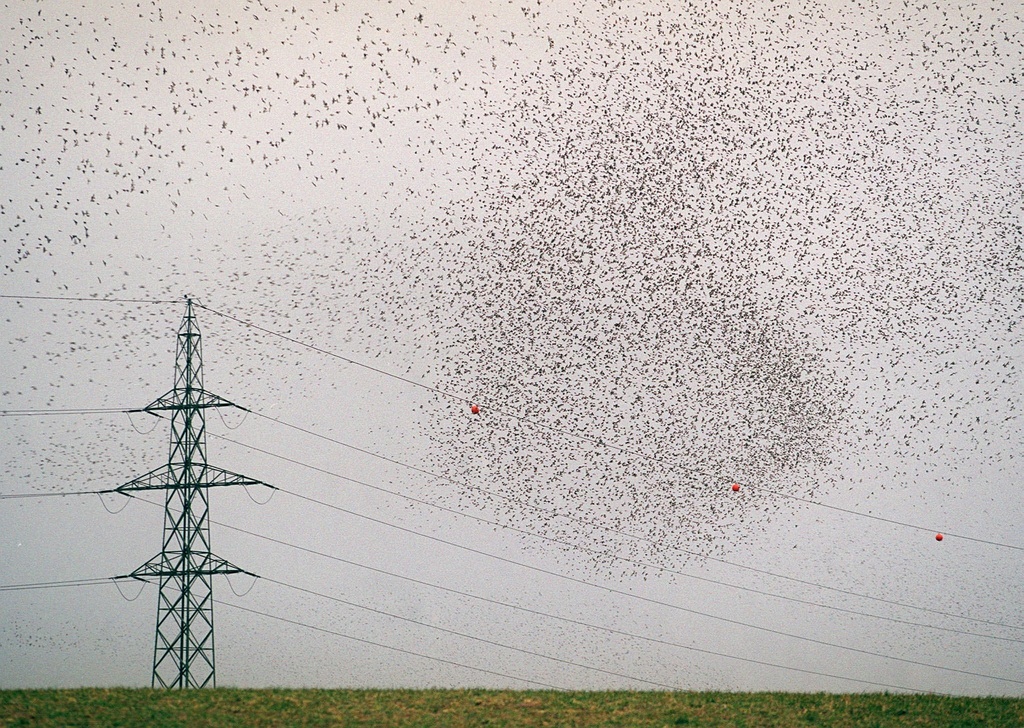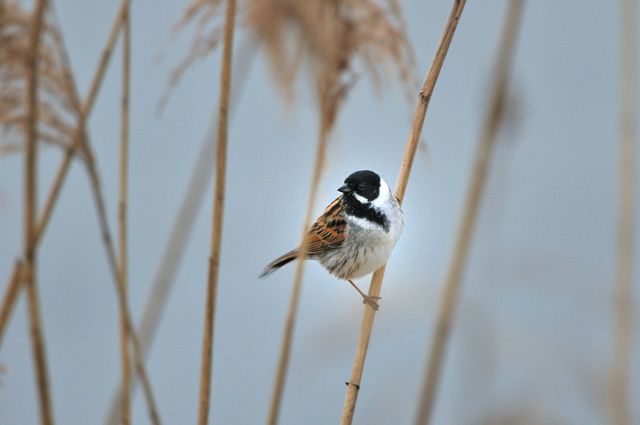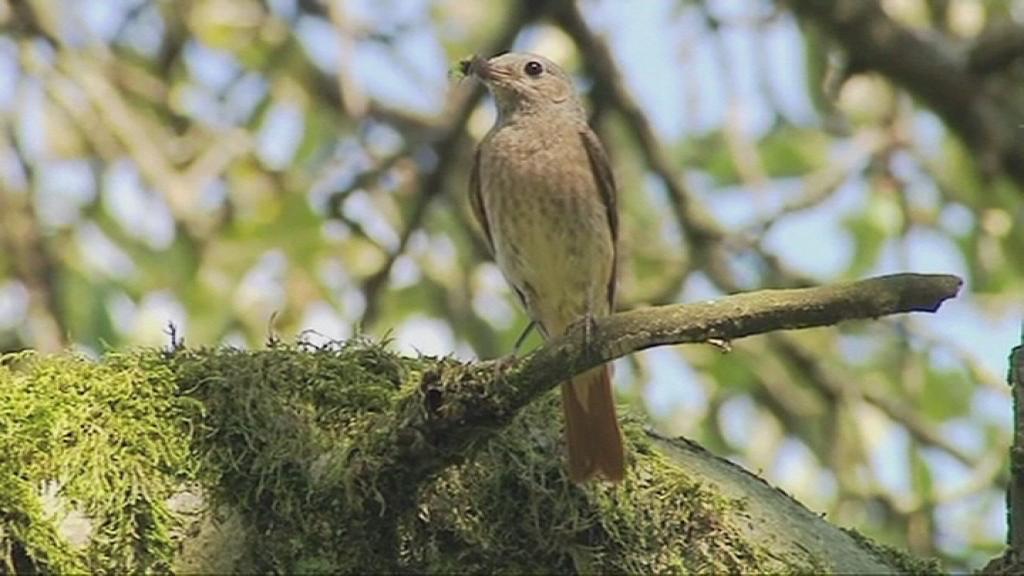Birdwatchers mobilise for autumn migration

This weekend birdwatchers across the continent are flocking to track the autumn migrations. Swiss ornithologists are coordinating the European event.
Seasonal bird migration is in full swing. Millions of birds are travelling through Europe on their way south for the winter. On October 1-2 birdwatchers in many countries will be taking part in EuroBirdwatch, organised by BirdLife International – a global partnership of conservation organisations.
EuroBirdwatch – BirdLife’s annual birdwatching event in Europe – is a cooperative effort among birders studying migration. But it also aims to raise public awareness about the phenomenon of bird migration, and about threatened species and their habitats.
This is a major event in the birding world – 37 countries in Europe and Central Asia are taking part. BirdLife Switzerland, the Swiss association for the protection of birds, is providing the Europe-wide coordination this year.
Fritz Hirt is leading this weekend’s operation for BirdLife Switzerland, which comprises 61,000 members and 450 local bird protection groups throughout the country.
“This year we’ve got the job. So we have set up two control centres at our office in Zürich. The Swiss centre gathers the results of the Swiss observation posts, puts them together and reports them to the European centre.
Local observations
The European centre [in the office right next door] gathers the results of all the national centres reporting by five o’clock in the evening, computes them, and by 8 o’clock that evening distributes the results and issues a Europe-wide press release.“
Hirt and his staff are not fazed by the challenge. “This is actually the third time we’ve done it since 1993,” he recalled.
BirdLife Switzerland is organising local observations at 63 sites around the country.
What are Swiss birders going to be looking out for this year? “Highlights are hard to forecast,” said Hirt.
“Migration is strongly affected by the weather – and the view of the observers can be affected by the autumn mist. At any rate, migrating raptors and large swarms of finches can be expected.”
The ornithologists will be focusing on some species of concern. “At our observation posts we will be paying particular attention to the trans-Sahara migrants,” explained Hirt.
One of these is the redstart. This bird’s numbers are declining, so it needs help maintaining its environment, but also its migration route. It is one of the species on the move right now.
Alpine passes
Graubünden in the Eastern Alps is “pass country” not only for people on the move but for birds migrating from Central Europe. Here local birders will be manning three mountain observation posts: Maloja Pass, Glass Pass and Lenzerheide.
One of the local coordinators is Simon Persenico. “We will be reporting the three most numerous species, the total number of birds seen, any rare birds, and the number of [human] visitors,” he told swissinfo.ch.
“At the observation posts we are also telling people about migration and answering their questions.”
Doyen of local birders Christoph Meier is looking forward to the occasion. “The weather has been very fine lately, so many species will have taken the opportunity to go already,” he admitted. “But we can expect swallows, pigeons and several species of raptors on the alpine passes.”
Earlier ornithologists believed that migratory birds just followed a few major routes, and that they always followed the same route. Now we know that migration routes vary considerably.
At migration time birds are literally flying in all directions. It even seems that some birds of the same species take different routes depending on their age. For example, mature honey buzzards on their way to Africa avoid the open sea and travel by Spain, while the more adventurous young birds go to Italy and across the Mediterranean.
The major valleys in the Alps, particularly in Graubünden, channel migration. So there are many good vantage points to watch the birds as they fly, especially on the passes but also in the valleys.
A fragile pattern
While ornithologists struggle to understand migration, they remain acutely aware that the whole system is endangered by human activity.
“A big issue for us is the illegal catching of birds in the Mediterranean region,” said Hirt. “BirdLife International is particularly concerned about this, and it is trying to combat the problem with educational programmes.”
Climate change, too, may have a catastrophic effect on migration patterns in the future, and even now its effects are being felt.
Our summer birds go south because it gets colder and the food supply dries up. But why migrate if it isn’t cold? Swallows in France, for example, are observed to migrate later and later each year.
Against this backdrop, EuroBirdwatch has a palpable sense of urgency about it.
Every year around this time ornithologists licensed to do so ring migrating birds and record the information from birds already ringed. Today’s ornithologists also use satellite telemetry. A small electronic device is placed on the bird’s back which emits signals that can be picked up by satellites so as to follow its itinerary over thousands of miles.
Migratory birds mostly follow a fixed route and go to the same destination; next spring they will return by the same route and arrive at the same destination in Europe.
It is possible that older birds remember the journey; but how can young birds know the route? They have never made the journey, and the older birds can’t tell them. They travel by instinct. How do they find their direction? From the sun? From the stars? (Many birds fly by night.) From the earth’s magnetic fields? There are still more questions than answers about bird migration.
Birdwatching, which is both sport and science, is a popular activity in Switzerland.
BirdLife Switzerland is the national bird conservation organisation, and a member of BirdLife International, based in Cambridge, England.
The main bird sanctuary and ornithological institute in Switzerland is in Sempach (Lucerne).
There are local associations for birding and conservation in the different cantons, which bring together many amateur birdwatchers. In addition, biology departments at Swiss universities sponsor doctoral research in ornithology.
Birding tourism is becoming popular in Europe, with enthusiasts watching birds in other countries besides their own.

In compliance with the JTI standards
More: SWI swissinfo.ch certified by the Journalism Trust Initiative



You can find an overview of ongoing debates with our journalists here. Please join us!
If you want to start a conversation about a topic raised in this article or want to report factual errors, email us at english@swissinfo.ch.